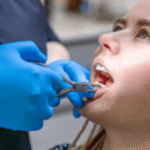Gap teeth, medically known as diastema, describe the space or noticeable separation between two teeth, most commonly the upper front incisors. For many individuals, the presence of gap teeth is more than a dental characteristic; it represents a unique blend of genetics, oral development, lifestyle habits, and in some cultures, even beauty or good fortune. Understanding gap teeth requires a comprehensive look at why they occur, how they affect oral health, and what options people have if they choose to change or embrace them. Within the first glance, readers often want to know: are gap teeth harmful, or are they simply an aesthetic feature? The short answer is that gap teeth are not inherently harmful, but depending on their size, position, and underlying causes, they may sometimes affect chewing, speech, or gum health.
Across history, gap teeth have carried varied meanings. In some societies, a visible gap is celebrated as a sign of charm, luck, or individuality, while in others, it prompts corrective dentistry. Today, modern dentistry offers numerous solutions—from orthodontics and veneers to bonding and aligners—that allow individuals to decide whether to keep or close their dental gaps. This article takes a deep dive into the causes, medical perspectives, cultural interpretations, and treatment options for gap teeth, offering a balanced narrative that blends history, science, and personal choice. “A smile is never ordinary; it carries the history of a face,” as one dental anthropologist remarked. With this perspective, gap teeth become not just a matter of dental spacing but also a reflection of heritage, personality, and personal health.
What Causes Gap Teeth?
Gap teeth can develop for a variety of reasons, often beginning in childhood as permanent teeth emerge. The most common cause is a mismatch between jaw size and tooth size. When the jaw is proportionally larger than the teeth, spacing occurs naturally, leaving visible gaps. Additionally, habits such as thumb-sucking, tongue thrusting, or prolonged use of a pacifier can put pressure on the teeth, creating or enlarging spaces. Genetics also play a strong role, as some families are predisposed to diastema due to inherited bone structure.
Another significant factor is the presence of a large labial frenum, which is the tissue connecting the upper lip to the gum. When this tissue extends too far down, it can create a barrier that prevents the two upper front teeth from coming together. In adults, periodontal disease may contribute to gaps by weakening the bone support around the teeth, causing them to shift. In short, causes of gap teeth range from benign developmental quirks to conditions that may need professional attention.
Medical Implications of Gap Teeth
From a medical standpoint, gap teeth are not always problematic. Many people live comfortably with diastema without any impact on their health. However, in some cases, gaps can influence bite function, speech clarity, and gum stability. For example, large gaps between front teeth can lead to a lisp or minor articulation challenges in speech. Additionally, food particles may more easily get trapped in wider spaces, increasing the risk of plaque buildup and gum irritation.
Dentists often evaluate whether a gap is harmless or requires intervention based on its size and the overall dental alignment. In children, gaps are often a natural stage in tooth development and close as more permanent teeth erupt. Yet, if gaps persist into adulthood or appear alongside other dental concerns, orthodontic or restorative treatment may be recommended. As one orthodontist noted, “The presence of a gap is not the problem; the underlying condition that allows it to form may be.”
Cultural and Historical Views on Gap Teeth
Cultural interpretations of gap teeth vary remarkably across societies and time periods. In West African traditions, a gap between the upper incisors is often considered a mark of beauty, attractiveness, and even fertility. French culture once coined the phrase “dents du bonheur” (teeth of happiness), associating a dental gap with luck and charm. In medieval Europe, some believed a gap suggested sensuality and strong character, adding allure to one’s smile.
Conversely, in other cultural contexts, gap teeth may be viewed as an imperfection to be corrected. In modern Western dentistry, the rise of orthodontic treatments has made closing gaps a common request. Social media trends also play a role, as beauty standards shift rapidly—sometimes celebrating natural gaps as unique, while at other times idealizing uniform, perfectly aligned teeth. What is fascinating is that the perception of gap teeth continues to evolve, with individuals increasingly empowered to decide whether to embrace their natural smile or pursue cosmetic changes.
Treatment Options for Gap Teeth
When individuals choose to close or minimize their gap teeth, modern dentistry offers a range of solutions. Orthodontics remains the most comprehensive option, using braces or clear aligners to gradually shift teeth into alignment. For those seeking faster results, dental bonding involves applying a tooth-colored resin to close the space, often completed in a single visit. Veneers, thin porcelain covers placed over teeth, can provide a long-lasting cosmetic solution while enhancing overall aesthetics.
In cases where a large frenum causes the gap, a minor surgical procedure called a frenectomy may be performed to remove the tissue and allow teeth to move closer together. For patients experiencing gum disease-related gaps, periodontal treatment is the priority before cosmetic work begins. Ultimately, the treatment path depends on personal preference, dental health, and budget considerations. “Every gap tells a story, but every smile deserves balance,” a cosmetic dentist once shared, emphasizing the dual role of functionality and aesthetics in treatment.
Table 1: Common Causes of Gap Teeth and Possible Solutions
| Cause of Gap Teeth | Typical Age Group | Possible Dental Solutions | Notes on Effectiveness |
|---|---|---|---|
| Genetic jaw-tooth size mismatch | Children/Adults | Orthodontics, bonding, veneers | Highly effective; depends on severity |
| Thumb-sucking or tongue thrust | Children | Behavior correction, orthodontics | Early intervention prevents worsening |
| Large labial frenum | Children/Adults | Frenectomy, orthodontics | Effective when addressed early |
| Periodontal disease | Adults | Gum treatment, orthodontics | Requires gum health restoration first |
| Natural developmental stage | Children | Observation only | Often resolves as permanent teeth erupt |
Psychological and Social Impact of Gap Teeth
Beyond oral health, gap teeth influence self-image and confidence. Some individuals proudly showcase their natural smile, finding identity and uniqueness in their dental spacing. For others, especially in societies where uniform teeth are idealized, gap teeth can become a source of insecurity. Studies in social psychology suggest that visible dental gaps may affect perceptions in professional settings, where people subconsciously equate straight teeth with competence or trustworthiness.
However, there is a growing counter-narrative celebrating gap teeth as a symbol of individuality. Influential figures in fashion and entertainment often highlight their natural gaps, redefining beauty standards and normalizing diverse smiles. This duality underscores the complex relationship between dental appearance, self-esteem, and societal expectations. Choosing whether to correct gap teeth is as much a personal and cultural decision as it is a medical one.
Advances in Cosmetic Dentistry for Gap Teeth
The evolution of cosmetic dentistry has transformed how people address gap teeth. Clear aligners, such as Invisalign, offer discreet orthodontic correction, appealing to adults who prefer subtle treatment. Additionally, digital smile design technology allows patients to preview results before committing to procedures like veneers or bonding. Minimally invasive techniques, such as no-prep veneers, also provide options for those hesitant about altering natural tooth structure.
Another advancement is the integration of laser technology in frenectomy procedures, which reduces recovery time compared to traditional surgical methods. Patients now have more customized choices, blending function, aesthetics, and convenience. Dentistry is no longer a binary decision of “fix or live with it”; rather, it offers a spectrum of possibilities, empowering patients to align treatment with personal values and goals.
Table 2: Treatment Options for Gap Teeth with Pros and Cons
| Treatment Method | Duration | Advantages | Considerations |
|---|---|---|---|
| Braces/Aligners | 12–24 months | Permanent solution, improves full alignment | Longer process, higher cost |
| Dental Bonding | Single visit | Quick, affordable, minimally invasive | May stain or wear over time |
| Veneers | 2–3 visits | Long-lasting, aesthetic enhancement | Irreversible, higher cost |
| Frenectomy | 1–2 weeks recovery | Solves tissue-related gap issues | Surgical procedure, requires orthodontics |
| Periodontal Therapy | Varies | Restores gum health, prevents progression | Necessary before cosmetic work |
Preventive Strategies and Dental Care
While not all gap teeth can be prevented due to genetic factors, certain habits and proactive care can minimize their development. Discouraging thumb-sucking and tongue thrusting in children is critical, as early habits can create lasting dental changes. Regular dental check-ups help identify emerging gaps caused by gum disease or bone loss, ensuring timely treatment. For adults, maintaining strong oral hygiene practices—brushing, flossing, and routine cleanings—supports gum health, reducing the likelihood of shifting teeth that widen gaps.
Dentists often stress that prevention is not solely about avoiding gaps but about maintaining overall oral harmony. Early orthodontic evaluations for children can detect spacing issues before they become more pronounced. In essence, preventive care is less about erasing individuality and more about ensuring oral structures remain functional and healthy throughout life.
Conclusion
Gap teeth occupy a unique intersection of dental science, cultural symbolism, and personal identity. They are not inherently harmful, but their significance extends far beyond a space between teeth. For some, they are a cherished hallmark of beauty and individuality; for others, a source of self-consciousness best addressed through modern dentistry. The decision to keep, celebrate, or correct gap teeth rests with the individual, guided by both health considerations and personal values.
Modern dentistry provides an impressive array of treatments, from orthodontics and veneers to laser-assisted procedures, making it possible to tailor solutions to each case. At the same time, cultural narratives continue to shape how society perceives these gaps, reminding us that beauty is never fixed but constantly evolving. “Smiles are the mirrors of our choices,” as one orthodontic expert reflected, highlighting the deeply personal nature of dental aesthetics.
Ultimately, gap teeth remind us that oral health is both a scientific discipline and a cultural story, woven together by history, tradition, and innovation. Whether left as nature intended or refined through cosmetic solutions, gap teeth symbolize the diversity of human expression, reinforcing the timeless truth that no two smiles are ever the same.
FAQs
1. Are gap teeth harmful to dental health?
Gap teeth are not inherently harmful. Many people live comfortably with diastema without any issues. However, depending on the size and location of the gap, it may sometimes affect speech clarity, chewing, or gum health. Large gaps can also make food more likely to become trapped, increasing the risk of plaque buildup and gum irritation. Dentists typically evaluate whether the gap is simply aesthetic or if it requires intervention for health reasons.
2. What are the main causes of gap teeth in children and adults?
The causes of gap teeth range from genetic factors, such as a mismatch between jaw size and tooth size, to habits like thumb-sucking and tongue thrusting in childhood. Other causes include a large labial frenum (the tissue connecting the lip to the gum) or gum disease in adults. In many children, gaps appear temporarily as permanent teeth develop and may close naturally without treatment.
3. What treatment options are available for closing gap teeth?
Modern dentistry provides several treatments depending on individual needs. Options include braces or clear aligners for long-term alignment, dental bonding for a quick fix, and veneers for a cosmetic upgrade. If the gap is caused by a large frenum, a minor procedure called a frenectomy may be required. Periodontal therapy is essential if gaps form due to gum disease. The choice depends on health, budget, and personal preference.
4. Can gap teeths be considered attractive or culturally significant?
Yes, cultural perceptions of gap teeth vary widely. In West African traditions, gaps are seen as signs of beauty and fertility. French culture refers to them as “dents du bonheur” or “teeth of happiness.” In some societies, they are considered lucky or charming, while in others, cosmetic correction is preferred. Ultimately, attractiveness is subjective, and modern perspectives often celebrate gap teeth as symbols of individuality.
5. How can gap teeth be prevented or managed early in life?
While not all gap teeth can be prevented due to genetic influences, certain steps can reduce their likelihood. Parents can help children avoid habits like thumb-sucking and tongue thrusting. Early orthodontic evaluations ensure that spacing issues are identified before they worsen. Maintaining strong oral hygiene practices also helps prevent gum disease, which can create gaps later in life. Proactive care ensures gaps are either naturally balanced or managed before becoming problematic.











